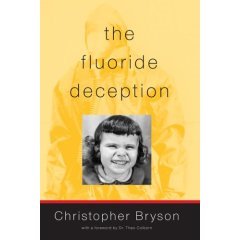 If you tell a lie often enough, it soon becomes accepted as truth. In 1991 Professor Edward R. Pickney, M.D., (former editor of the Journal of the American Medical Association) and Doctor Russell L. Smith, PhD.D., produced a book entitled The Cholesterol Conspiracy. In it, he says, "Hitler did it. He was not the first but he did it quite successfully. 'It' being the big lie. What is even worse, the big lie about cholesterol may well kill millions of people . . "
If you tell a lie often enough, it soon becomes accepted as truth. In 1991 Professor Edward R. Pickney, M.D., (former editor of the Journal of the American Medical Association) and Doctor Russell L. Smith, PhD.D., produced a book entitled The Cholesterol Conspiracy. In it, he says, "Hitler did it. He was not the first but he did it quite successfully. 'It' being the big lie. What is even worse, the big lie about cholesterol may well kill millions of people . . "
As I watch TV, the airwaves seem to be filled with advertisements for drugs like Lipitor, Crestor, Pravachol, Zocor or Mevacor. These are a class of drugs that are intended to lower the bad (LDL) cholesterol in our blood. The theory being that high cholesterol causes heart disease and heart attacks. Drug ads are really funny. They show a beautiful young couple skipping through a field of flowers without a care in the world. The implication is that by taking their drug, you could look like this too. So . . . You go to your doctor and ask him if "xyz" drug would be good for you. What is he supposed to say? No? So of course he gives you the prescription you ask for and you are off to skip in the flowers. After all, he does not want to lose you as a patient. And we all lived happily ever after. Click here to access a very amusing (but serious) video concerning drug safety.
Baycol (cerivastatin) was marketed a few years ago as a "super-statin." They claimed that it was able to lower LDL cholesterol more than any other drug. Unfortunately, there were not enough human tests done on the drug and many people were severely injured and/or died. It was removed from the market in 2001. The newest statin, Crestor (rosuvastatin) has been marketed as a "super-statin" because AstraZeneca claims it reduces LDL cholesterol to a greater degree than the other approved statin drugs. Like Baycol, Crestor has a number of disturbing side effects:
- Abdominal Pain
- Arrhythmia
- Asthenia
- Myalgia
- Myopathy
- Pancreatitis
- Rhabdomyolysis
- Kidney Failure/Dialysis
- Hospitalization
- Death
Other statin drugs have a similar list of side effects. If you take a statin drug, you should contact your doctor immediately if you experience unexplained muscle pain, tenderness, or weakness, especially if accompanied by a fever or flulike symptoms or yellowing of the skin or eyes, abdominal pain, unexplained fatigue, dark colored urine or pale colored stools. These may be early symptoms of muscle or liver problems from taking a statin drug.
One of the most disturbing side effects (besides death) is muscle pain and weakness, a condition called rhabdomyolysis, most likely due to the depletion of Co-Q10, a nutrient that supports muscle function. Dr. Beatrice Golomb of San Diego, California is currently conducting a series of studies on statin side effects. The industry insists that only 2-3 percent of patients get muscle aches and cramps but in one study, Golomb found that 98 percent of patients taking Lipitor and one-third of the patients taking Mevachor (a lower-dose statin) suffered from muscle problems.
The test for muscle wasting or rhabdomyolysis is elevated levels of a chemical called creatine kinase (CK). But many people experience pain and fatigue even though they have normal CK levels.
Tahoe City resident Doug Peterson developed slurred speech, balance problems and severe fatigue after three years on Lipitor. —For two and a half years, he had no side effects at all. It began with restless sleep patterns, —twitching and flailing his arms. Loss of balance followed and the beginning of what Doug calls the "statin shuffle"—a slow, wobbly walk across the room. Fine motor skills suffered next. It took him five minutes to write four words, much of which was illegible. Cognitive function also declined. It was hard to convince his doctors that Lipitor could be the culprit, but when he finally stopped taking it, his coordination and memory improved.
John Altrocchi took Mevacor for three years without side effects; then he developed calf pain so severe he could hardly walk. He also experienced episodes of temporary memory loss.
For some, however, muscle problems show up shortly after treatment begins. Ed Ontiveros began having muscle problems within 30 days of taking Lipitor. He fell in the bathroom and had trouble getting up. The weakness subsided when he went off Lipitor.
In another case, reported in the medical journal Heart, a patient developed rhabdomyolysis after a single dose of a statin. Heel pain from plantar fascitis (heel spurs) is another common complaint among those taking statin drugs. One correspondent reported the onset of pain in the feet shortly after beginning statin treatment. She had visited an evangelist, requesting that he pray for her sore feet. He enquired whether she was taking Lipitor. When she said yes, he told her that his feet had also hurt when he took Lipitor. treatment.
Active people are much more likely to develop problems from statin use than those who are sedentary. In a study carried out in Austria, only six out of 22 athletes with familial hypercholesterolemia were able to endure statin treatment. The others discontinued treatment because of muscle pain.
By the way, other cholesterol-lowering agents besides statin drugs can cause joint pain and muscle weakness.
A report in Southern Medical Journal described muscle pains and weakness in a man who took Chinese red rice, an herbal preparation that lowers cholesterol. Anyone suffering from myopathy, fibromyalgia, coordination problems and fatigue needs to look at low cholesterol plus Co-Q10 deficiency as a possible cause.
So what is rhabdomyolysis any way? It is the breakdown of muscle fibers resulting in the release of muscle fiber contents into the blood circulation, which can be toxic to the kidneys and can result in myoglobinuria and kidney damage.
Myoglobin is a damaging oxygen-binding protein pigment found in the skeletal muscle. When the skeletal muscle is damaged, myoglobin is released into the bloodstream. It is filtered out of the bloodstream by the kidneys. Myoglobin breaks down into potentially toxic compounds causing kidney failure.
Here are a few questions to consider.
- If statin drugs cause the breakdown of muscle fiber (including the heart muscle) and a depletion of Coenzyme Q-10 (a nutrient that supports muscle function), could they actually CAUSE you to have a heart attack?
- If the liver is responsible for regulating up to 80% of my cholesterol levels, why would I want to take statin drugs for lowering cholesterol considering that the number one known side effect of statin drugs is liver damage?
- If cholesterol is the main culprit in heart disease, why don't veins ever get narrowed and blocked?
- If high cholesterol foods are responsible for raising cholesterol levels, then why do people on the high-cholesterol Atkins Diet experience such a significant drop in cholesterol levels?
- Why do Eskimos who eat a traditional diet of almost pure saturated fat (whale and seal blubber) have almost a zero incidence of heart disease?
Dr. Mike Gordon puts it this way:
If a person were healthy, would he/she need drugs to maintain this health? Did nature/God make bodies that were short on chemicals and long on organs? You certainly get this impression from the advertising and most MD's. I submit that the real issue is unhealthy daily habits that are allowed to continue by default when you take drugs to suppress the symptoms of this unhealth. Medicine was intended to be short term, if at all, until you were able to raise your level of health to no longer "need" the drug. Profits have since intervened. We are now told or it is implied that this or that drug is necessary for the rest of our life. This goes against all logic. What other live thing on the planet requires drugs to survive? This argument is made all the more obvious when you see the information I have included below. I would like to offer a few more stats for everyone to consider: "Total number of deaths caused by conventional medicine is an astounding 783,936 per year. It is now evident that the American medical system is the leading cause of death and injury in the US. (By contrast, the number of deaths attributable to heart disease in 2001 was 699,697, while the number of deaths attributable to cancer was 553,251" These stats are from Life Extension Magazine March 04. Article DEATH BY MEDICINE You and I are responsible for being healthy. It comes from healthy choices each day, not in a bottle. Dr. Mike Gordon
Check out some surprising information about Statin drugs:
Dangers of Statin Drugs: What You Haven’t Been Told About Popular Cholesterol-Lowering Medicines
Can Your Cholesterol Be Too Low?
Cholesterol is NOT the Cause of Heart Disease
Debunking The Cholesterol Myth
The Benefits Of High Cholesterol
Cholesterol—How Low Should You Go?
Statin drug side effects
Stopped Our Statins
Side Effects, Resources, General Info
Home
Cholesterol Conspiracy Blog by Ladd McNamara
StatinAlert.org - There are two sides to every story; discover some of the less publicized facts about cholesterol-lowering drugs











 My StumbleUpon Page
My StumbleUpon Page





